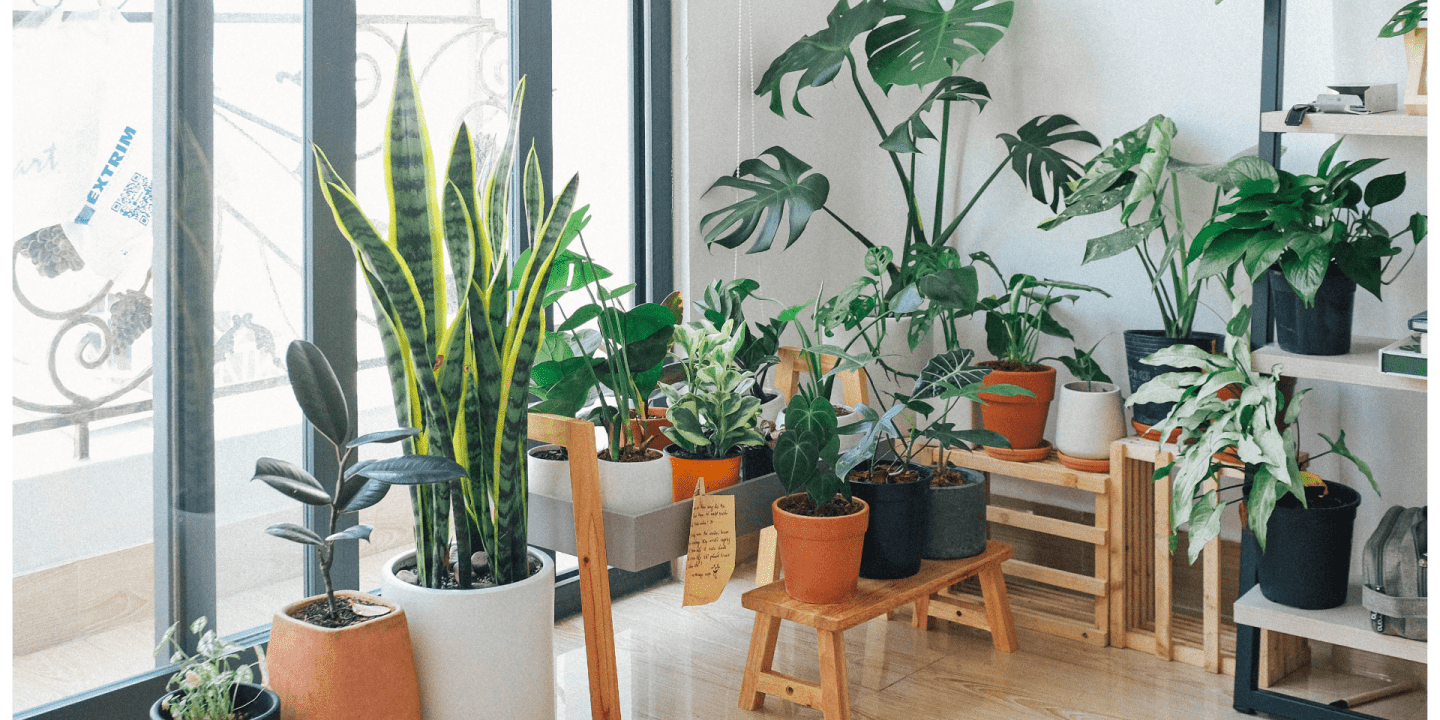Cleaning plant pots might not be the first thing that comes to mind when thinking about plant care, but it is an essential aspect of maintaining a healthy, happy, and thriving environment for your plants. In this blog post, we will explore the importance of cleaning plant pots, as well as discuss the different types of plant pots and their benefits and outline the most effective ways to clean and disinfect them.
Why Cleaning Plant Pots Matters
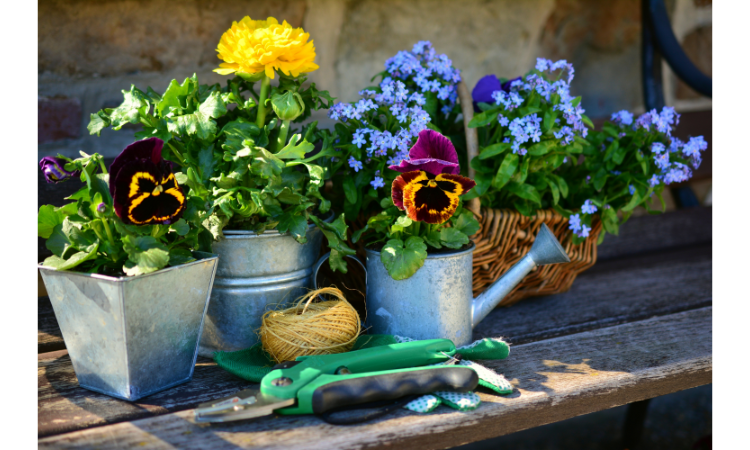
The importance of cleaning plant pots cannot be overstated. Over time, plant pots accumulate dirt, dust, mineral deposits, and even pests, which can lead to a host of problems for your plants. Cleaning and disinfecting plant pots can prevent the spread of diseases and pests, encourage healthy plant growth, and contribute to a clean home environment.
Benefits of Cleaning Plant Pots
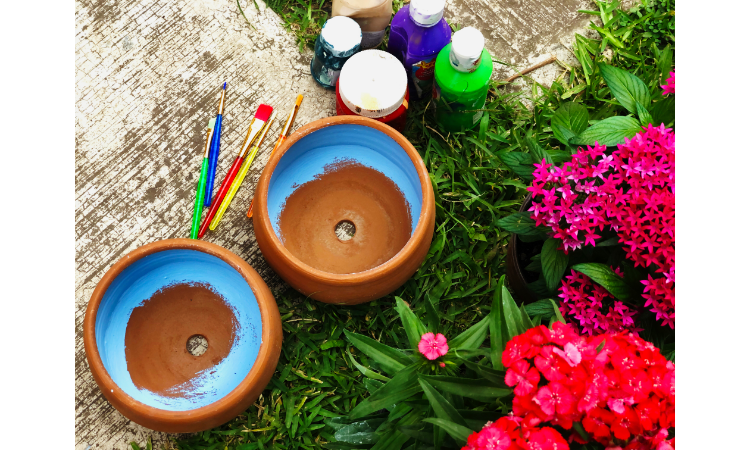
- Prevents the spread of diseases and pests: By regularly cleaning and disinfecting plant pots, you can reduce the risk of spreading diseases and pests from one plant to another. This is especially important if you are reusing pots or introducing new plants to your home.
- Promotes healthy plant growth: Clean pots provide a better environment for your plants, allowing them to grow stronger and healthier. Dirty pots can harbor harmful bacteria and fungi, which can stunt growth or even kill your plants.
- Contributes to a clean home environment: Clean plant pots not only look better, but they also contribute to a cleaner and healthier home. A clean environment is important for maintaining good mental and physical health, as well as reducing stress and boosting productivity.
Different Types of Plant Pots and Their Benefits
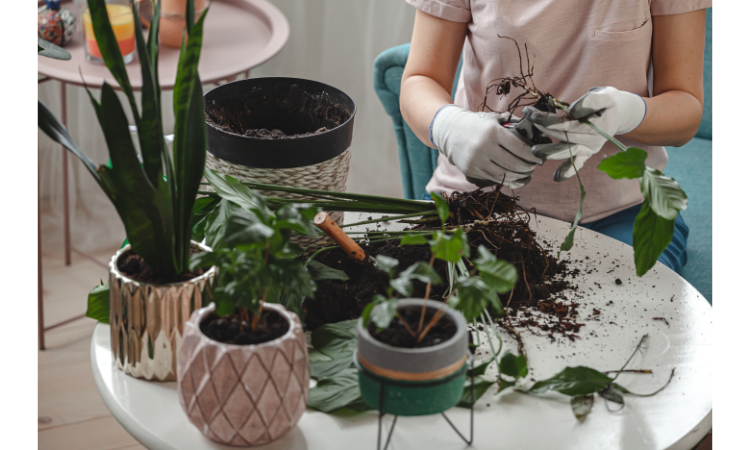
When choosing the perfect pot for your plants, it’s important to consider the material. Here are some popular options:
- Ceramic pots: Are ceramic pots good for plants? Yes! Ceramic pots provide excellent insulation and help maintain consistent soil moisture. They are also aesthetically pleasing and come in a variety of styles and colors.
- Clay pots: Why are clay pots good for plants? Clay pots are porous, allowing air and water to pass through the walls, promoting healthy root growth and preventing root rot. They also help regulate temperature and moisture, making them ideal for many types of plants.
- Porcelain pots: Are porcelain pots good for plants? While not as porous as clay pots, porcelain pots can still provide adequate drainage and moisture retention. They are also attractive and come in many designs.
Cleaning and Disinfecting Plant Pots
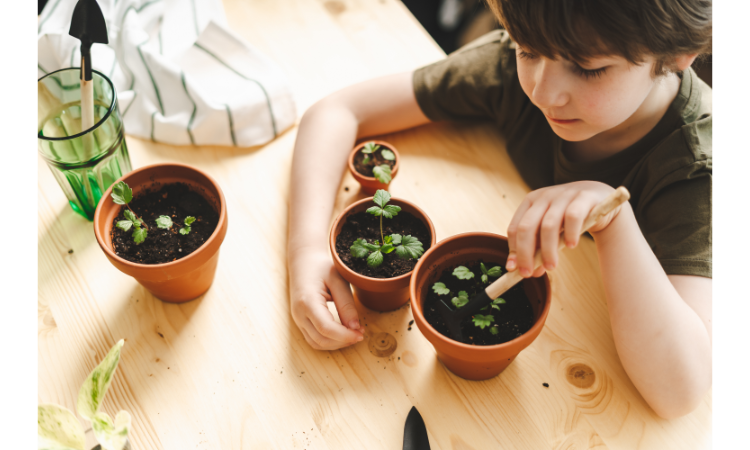
Now that we understand the importance of cleaning plant pots, let’s explore the various methods for effectively cleaning and disinfecting them.
Cleaning Plant Pots with Vinegar
How to clean plant pots with vinegar? Vinegar is an effective, natural cleaning solution that can be used for cleaning plant pots. Follow these steps:
- Remove any remaining dirt or debris from the pot.
- Mix equal parts white vinegar and water in a large container or bucket.
- Soak the pot for at least 30 minutes.
- Use a soft brush to scrub away any remaining dirt or mineral deposits.
- Rinse the pot thoroughly with clean water and allow it to dry completely before reusing.
Cleaning Plant Pots with Hydrogen Peroxide
How to clean plant pots with hydrogen peroxide? Hydrogen peroxide is another effective and safe option for cleaning and disinfecting plant pots. Here’s how to do it:
- Remove any remaining dirt or debris from the pot.
- Mix one part 3% hydrogen peroxide with nine parts water in a large container or bucket.
Soak the pot for at least 30 minutes. 4. Use a soft brush to scrub away any remaining dirt or mineral deposits.
- Rinse the pot thoroughly with clean water and allow it to dry completely before reusing.
Cleaning Plant Pots with Bleach
How to clean and disinfect plant pots with bleach? Bleach is a powerful disinfectant that can be used to clean and sterilize plant pots. However, it should be used with caution and in a well-ventilated area. Here’s how to clean plant pots with bleach:
- Remove any remaining dirt or debris from the pot.
- Mix one part bleach with nine parts water in a large container or bucket.
- Soak the pot for at least 30 minutes.
- Use a soft brush to scrub away any remaining dirt or mineral deposits.
- Rinse the pot thoroughly with clean water and allow it to dry completely before reusing.
How to Disinfect Plant Pots Without Bleach
If you prefer not to use bleach, there are other methods for disinfecting plant pots. One option is to use a solution of water and a few drops of dish soap, following the same steps outlined above for cleaning with vinegar or hydrogen peroxide. Another alternative is to use boiling water to sterilize the pots, but be cautious, as this method may not be suitable for all pot materials, such as plastic.
Cleaning Specific Types of Plant Pots
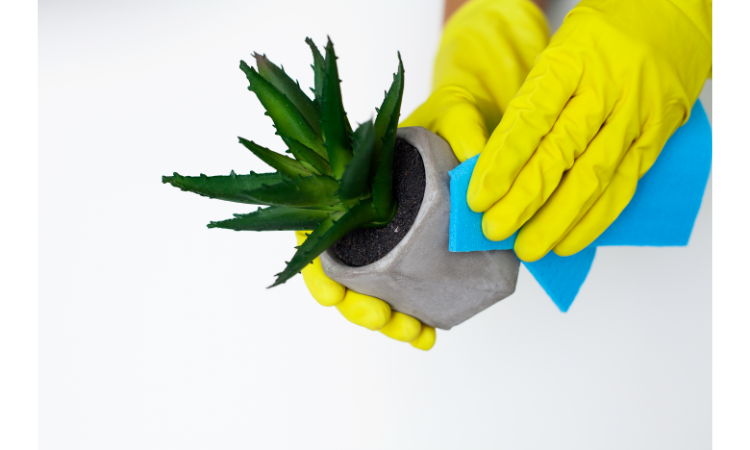
Different types of plant pots may require specific cleaning methods:
- How to clean ceramic plant pots: Ceramic pots can be cleaned using any of the methods mentioned above (vinegar, hydrogen peroxide, or bleach). Be sure to rinse thoroughly and allow them to dry completely before reusing.
- How to clean clay pots with plants in them: If you need to clean a clay pot without removing the plant, try gently wiping the exterior of the pot with a damp cloth or sponge. You can also use a soft brush to remove any dirt or mineral deposits. Avoid using harsh chemicals, as they can be absorbed by the porous clay and harm the plant.
- How to clean used plastic plant pots: Plastic plant pots can be cleaned using the same methods as ceramic pots. Be sure to rinse thoroughly and allow them to dry completely before reusing.
Additional Tips for Maintaining Clean Plant Pots
- Washing pots before planting: It is essential to clean and disinfect pots before planting to prevent the spread of diseases and pests. This applies whether you are reusing pots or using new ones.
- Cleaning potting pots: Regularly clean and disinfect the pots and tools you use for potting and repotting plants.
- Cleaning plant leaves: In addition to cleaning plant pots, it’s also important to clean plant leaves to promote healthy growth and prevent pests. Gently wipe the leaves with a damp cloth or use a soft brush to remove dust and debris.
Conclusion
In conclusion, the importance of cleaning plant pots cannot be overstated. By maintaining clean and disinfected pots, you can prevent the spread of diseases and pests, promote healthy plant growth, and contribute to a cleaner home environment. Be sure to use appropriate cleaning methods for different types of pots, and always clean and disinfect pots before planting or reusing them. Happy planting!
